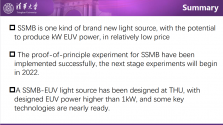A high-precision lithography equipment of Taijing Technology has achieved another success
Taijing Technology's newly developed high-precision supporting equipment for lithography engineering - automatic wafer frequency modulation and selection machine, has recently made a new breakthrough. This equipment is suitable for lithography wafer frequency adjustment and sub-measurement. The mass production and quality improvement of the lithography process of the technology. The successful development of this equipment not only fills the gap in the industry, but also ensures the confidentiality of key technologies, providing a better solution for the company's ongoing large-scale production expansion.

The equipment uses a specific spectrum to replace the original light source, and uses a new test circuit and measurement method, which greatly improves the accuracy and efficiency of the equipment. At present, the frequency adjustment accuracy of the equipment used can reach ±5PPM, the pass rate is over 98.5%, and various indicators have reached the international advanced level. Equipment research and development with independent intellectual property rights enables the company to continue to innovate. After equipment upgrades, it can process smaller 1mm series products.

The successful development of this equipment has not only greatly improved product quality and production efficiency, but also the equipment performance advantages have been highly recognized by Japanese counterparts. At present, several sets have been delivered to a world-renowned peer, which has been highly praised by the global giant peer.

old news but kind of interesting
Henan Research Institute has developed a fully automatic 12 inch wafer laser graving equipment which support 5nm DBG process.
5nm advanced process, ultra-thin wafer full cutting, TAIKO ultra-thin ring cutting... China Great Wall has made another major breakthrough in the semiconductor industry!
Recently, the Zhengzhou Rail Transit Information Technology Research Institute (hereinafter referred to as "Zhengzhou Rail Transit Institute"), a subsidiary of the Great Wall of China, has launched a fully automatic ultra-thin wafer full-cutting process based on its experience and experience in developing semiconductor laser invisible wafer cutting equipment. 12-inch wafer laser grooving equipment. In addition to the conventional laser grooving function, the equipment also supports 5nm DBG process, ultra-thin wafer full cutting function below 120 microns, fab IGBT process-end related processes and TAIKO ultra-thin ring cutting and other high-precision processes. Add another "sharp weapon" to the localized semiconductor industry chain.
Jade is not cut, not a device! It is reported that the modular design of the device can support lasers with different pulse widths (nanosecond, picosecond, femtosecond). The self-developed optical system can realize continuous adjustment of the spot width and length. With the ultra-high-precision motion control platform and other technologies, it is perfectly combined with the laser hidden cutting equipment and complements each other. , the resistivity limit, truly realizes the full compatibility of the process, which is of great help to effectively control the product breakage rate and improve the chip yield.
Looks like they are using ultra short pulse lasers to cut dies in a wafer with minimal damage the intricate delicate circuitry of smaller process nodes.




